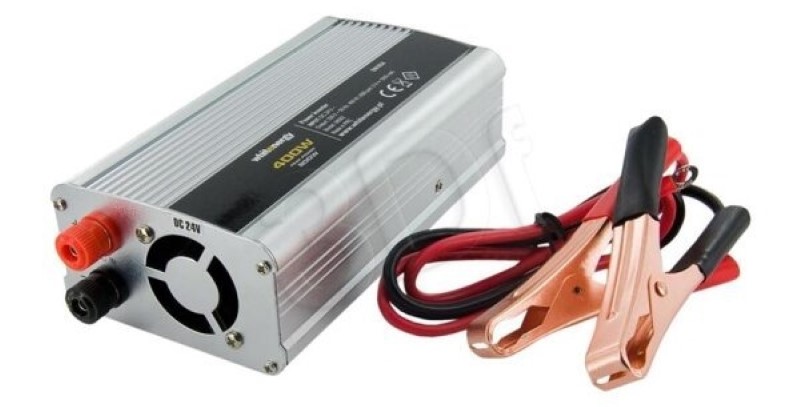From direct current to alternating current directly in your car
If you’ve ended up reading this article it’s probably because you need to understand what kind of device you can use to safely charge small electronic items directly into your car. The device you are looking for is called a car converter.
Table of Contents
What is a car converter
A car converter is a small electronic device designed to convert the DC electrical output from an automotive battery into alternating current, which can be used to power devices such as cell phones and other small devices. Most car inverters or converters are designed to fit the cigarette lighter, which is located on the control console in most vehicles and provides easy access to the battery. The inverters in turn are normally connected to charging cables or cables designed for specific devices, especially phones or small computers.

Theoretically, almost any device can be powered by the car battery, but most car converters are intended for small and occasional use only. Powering large devices or using charges for extended periods can drain the battery and affect the power the car itself is receiving, which is not recommended. Larger and more permanent options can be mounted directly on the battery itself and wired into the car, although this often requires a lot of experience and certainly a different cost than a common converter.
Car Power Basics: How the Car Converter Works
The batteries in most cars and trucks provide power to the vehicle, as well as support accessories such as radios and lighting. When the car is in motion, the battery normally charges itself, which allows a more or less constant flow of power into the vehicle.

This power looks like a direct current, or “DC”. Direct current is perfect for devices powered directly from the battery, but does not normally work for external electronics. Things like smartphones and music players normally require alternating current, or “AC”. The main task of the inverter is to convert the DC signal into an AC output.
What should a car converter do?
People often find themselves in situations where it would be convenient to charge their electronic devices while driving. Cell phones are a very common example, as are portable GPS units. Especially on longer trips, it can be helpful to be able to keep these types of devices fully charged. Car converters are designed specifically for this purpose and essentially allow a person to turn the car’s existing DC plug into an AC outlet. Once reversed, the socket will function much like any wall socket in your home or office, although in most cases the cables connected are those specific to the device. Converters are available in a wide variety of sizes.
Some versions simply involve connecting a cable to the car’s cigarette lighter, while the permanent units are mounted in the vehicle’s engine compartment and connected directly to the battery. Most people are familiar with the cigarette lighter style of inverters, as they are relatively inexpensive, widely available in most places, and generally quite simple to use. Many smaller appliances, such as laptops, DVD players, and small TVs, will work with this type of inverter. Larger inverters, usually located under the hood, are mounted close to the vehicle’s battery and are designed for much larger products, such as circular saws, drills, and projectors.
The more advanced examples are very elaborate, often incorporating numerous attachments, others are fairly simple, with a single electrical outlet or USB port. Many families install a temporary car inverter to power a TV or DVD player for their children, for example, as they head on road trips or go camping.
How to choose a car converter
It is important to choose a car converter that meets both the user’s needs and the electrical demands that will be placed on it. Using a small inverter to run equipment that requires a lot of power will make it difficult to run accessories, for example, as most inverters have fuses that will trip beyond a certain voltage. To purchase the correct size inverter, the user must add the maximum power for each accessory he intends to use simultaneously on the inverter and then add 10% to that number. An inverter capable of handling this power should operate without tripping the fuse while the appliances are running.










